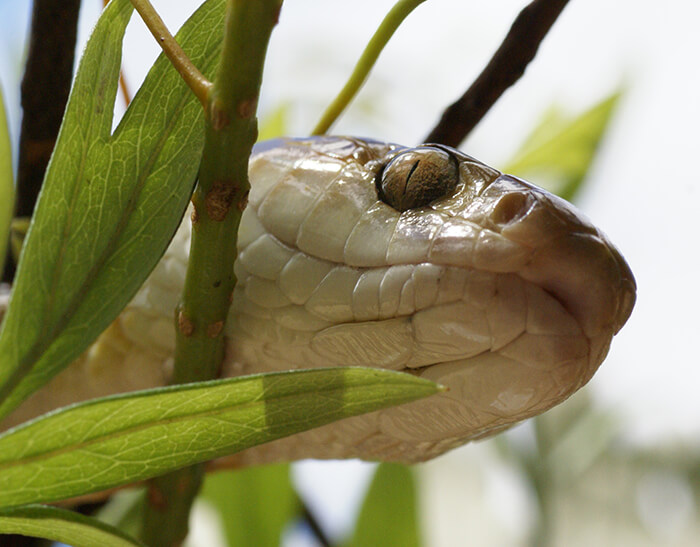Introduction
The Tasmanian tiger snake, medically called Notechis scutatus, is among Australia's the majority of appealing reptiles. Found largely in Tasmania and its surrounding islands, this serpent has actually amassed interest not just for its striking appearance yet likewise for its intricate habits and crucial duty in the community. This article will explore the numerous elements of the Tasmanian tiger snake's habitat, habits, anatomy, and interactions with human beings while supplying important info about safety measures in instance of a snake bite.
Whether you're a researcher, a wildlife enthusiast, or just a person interested about these remarkable creatures, this thorough guide guarantees to provide understandings that are both helpful and interesting. So allow's start this trip to comprehend the Tasmanian tiger snake better!
The Tasmanian Tiger Snake: An Overview
Physical Attributes of the Tasmanian Tiger Snake
Tiger snakes are identified by their distinctive pigmentation and patterns. They typically exhibit a mix of yellow or cream red stripes on a dark brownish or black history-- for this reason the name "tiger." Adult tiger serpents can grow up to around 2.1 meters long, although the majority of individuals average around 1.5 meters.
Key Features:
- Coloration: Varies from dark brown to olive green with lighter bands. Size: Adults normally range from 1.2 to 2.1 meters. Head Forming: Noticeably broad with prominent eyes.
Distribution and Environment of the Tasmanian Tiger Snake
The Tasmanian tiger snake primarily occupies coastal areas, wetlands, marshes, and meadows in Tasmania. It thrives in environments where it can quickly access water resources given that it is typically discovered near streams or lakes.

Habitat Preferences:
- Wetlands: Suitable for hunting target like frogs and small mammals. Coastal Locations: Offers bountiful food resources. Grasslands: Provides cover and basking spots.
Understanding Tiger Serpent Behavior
Feeding Practices of the Tasmanian Tiger Snake
Tiger serpents are meat-eating and opportunistic feeders. Their diet plan consists mainly of frogs, fish, tiny creatures, and birds. They rely upon their keen eyesight and swift movements for hunting.
Dietary Break down:
- Frogs: A key part as a result of abundance in marsh habitats. Fish: Frequently caught when swimming in shallow waters. Small Creatures: Occasionally take advantage of rodents.
Breeding Habits of the Tasmanian Tiger Snake
Tiger serpents have a fascinating reproductive cycle. Mating usually takes place in spring after arising from hibernation. Women tiger snakes bring to life live young instead of laying eggs, which is somewhat special among reptiles.
Reproductive Cycle:
- Mating Period: Springtime (September to November). Gestation Duration: Around three months. Litter Size: Arrays from 20 to 40 baby tiger snakes.
Aggression and Defense reaction of the Tasmanian Tiger Snake
Though they can be aggressive when intimidated, tiger serpents often choose to retreat instead of confront threat straight. Their primary defense reaction include biting when collared or displaying their dimension through hissing.
Defensive Methods:
- Hissing Sound: A caution signal showing distress. Bite Response: A last option when getaway choices are limited.
Are Tiger Snakes Venomous? Recognizing Their Venom
Venom Composition and Effects
Yes! The Tasmanian tiger serpent is venomous. Its poison includes neurotoxins Swelling Reduction that can create severe injury or even death if left unattended. The effects of a bite can include paralysis, swelling at the bite tiger snake bite site, nausea, and various other systemic symptoms.
Venom Characteristics:
- Neurotoxic Elements: Impact nerve system functioning. Hemotoxic Results: Can bring about cells damage.
Common Signs Following a Tiger Serpent Bite
Recognizing signs without delay is important for reliable first aid management after a serpent bite:
- Severe discomfort at bite site Swelling Nausea or vomiting Difficulty breathing
First Aid for Snake Bites: What You Required to Know
Immediate Steps After a Tiger Serpent Bite
In case you run into a scenario entailing a tiger serpent bite, it's vital to act swiftly:

Creating Your Serpent Bite Emergency Treatment Kit
Having a sufficiently equipped emergency treatment set can make all the distinction during emergencies:|Item|Objective|| ------|---------|| Compression plaster|To debilitate limb|| Splint|To maintain injured King brown snake bite area|| Antibacterial wipes|For cleaning up injuries|
FAQs Regarding the Tasmanian Tiger Snake
What do infant tiger snakes eat?
Baby tiger serpents mainly feed on little pests and amphibians until they grow large sufficient to search bigger victim like frogs or tiny fish.
How hazardous is a tiger snake bite?
A tiger snake bite can be incredibly harmful due to its potent venom; instant medical focus is important for survival.
Where are eastern tiger snakes found?
Eastern tiger snakes inhabit coastal areas across southeastern Australia but are much less common than their Tasmanian counterparts.

What needs to I do if I see a tiger snake?
Maintain your range; do not try to manage it unless you're trained to do so-- most attacks take place during attempts at capture or mishandling.
Can I survive without antivenom after being bitten?
While some people might make it through without antivenom relying on different factors such as wellness conditions and time taken for therapy; looking for prompt medical assistance is constantly recommended as it significantly enhances survival chances.
Are there any type of details safety measures I ought to take while treking in Tasmania?
Always put on durable boots, stay on significant tracks, avoid high grass where presence might be restricted; acquaint yourself with regional wildlife before going out into nature!
Conclusion
The Tajamanian tiger snake represents an important part of Australia's rich biodiversity landscape both ecologically as killers and culturally as symbols within Australian mythology. Understanding their environment preferences together with behavior supplies insight into just how we can exist together securely while respecting wildlife borders-- keeping in mind that understanding leads us in the direction of more secure adventures outdoors!
By staying informed concerning potential threats such as envenomation from attacks while additionally taking safety nets guarantees favorable experiences when experiencing these fascinating animals!
In verdict, whether you're captivated by their striking look or astounded by their complicated behaviors-- the Tasmanian tiger serpent unquestionably is worthy of acknowledgment beyond mere fascination-- it envelops nature's beauty intertwined intricately within our ecosystems!